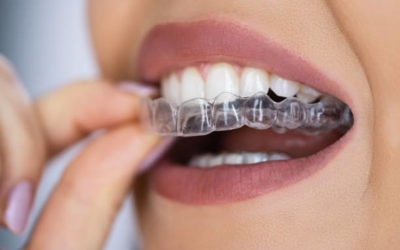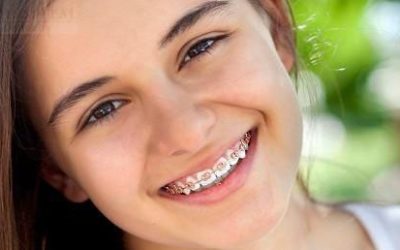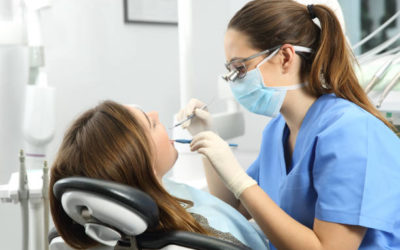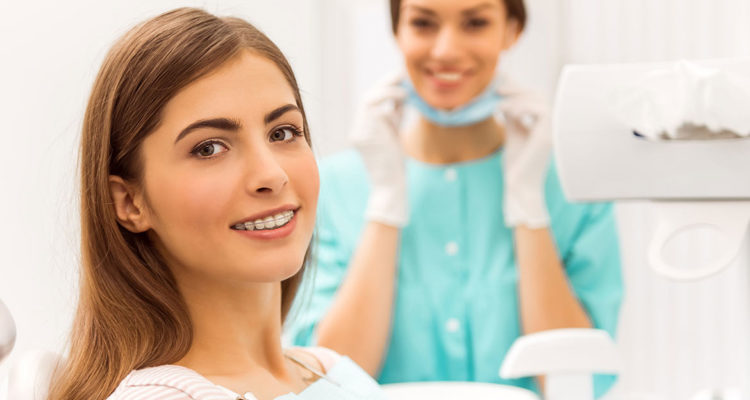
Orthodontic treatment in Geneva: 5 things to know
If you're unhappy with the way your teeth look and feel, we strongly recommend orthodontictreatment in Geneva. It could be the solution to your tooth alignment problems.
Misaligned, protruding or overlapping teeth detract from the appearance of your teeth. Orthodontic treatment not only enhances your smile, but also promotes oral health.
What is Orthodontics? At what age should you start? Find out 5 things you need to know before making an appointment.
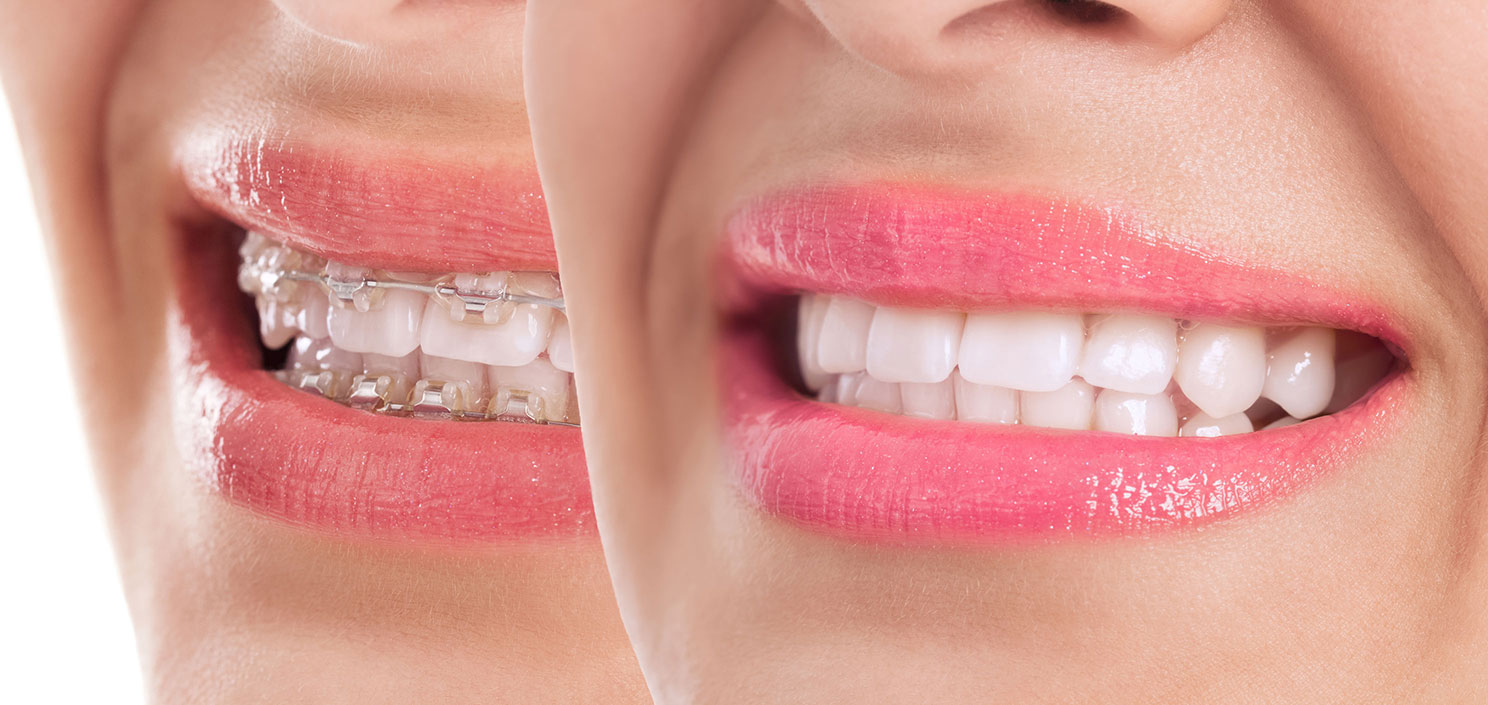
1 - What is orthodontics?
Orthodontics is a specialty in dentistry that corrects malpositioned jaws and teeth.
For comfort and aesthetics, as well as to prevent cavities and gum problems. Orthodontics involves moving teeth and modifying jaw growth to achieve proper dental alignment and improve all oral functions.
An orthodontist is a dental surgeon who specializes in dentofacial orthopedics.
2 - How does orthodontic treatment work?
The position of the teeth and jaw has a decisive influence on the occlusion. The occlusion is the articulation of the upper teeth with the lower ones.
When the upper teeth are not properly aligned with the lower teeth, it is called malocclusion. Missing, misplaced, overlapping or protruding teeth can contribute to malocclusion.
Malocclusion can make it difficult to chew certain foods and can cause some teeth to wear out. It can also cause muscle tension and pain. Advanced teeth can be more easily chipped or broken. Also, misaligned or overlapping teeth are more difficult to brush, increasing the possibility of gum disease and cavities.
The 1st consultation with the practitioner
The first consultation with the dentist is crucial, as it enables the practitioner to examine the patient, take photographs and propose one or more orthodontic treatment plans tailored to the patient.
After this initial consultation, a second appointment will be made to carry out the orthodontic assessment.
Therefore, X-rays may be requested by the practitioner a few days before. The interval between these two visits gives the patient time to reflect on the appropriate decision.
Orthodontic assessment
With the help of the X-rays sent by the patient, the dentist will be able to gather and complete his observations made during the first consultation.
The radiological check-up will enable us to determine the state of the periodontology and the movements to be achieved. This information is essential for deciding on the type of appliance to be used.
With all these elements, the final diagnosis will be established, and an estimate printed according to the treatment plan and the chosen equipment.
The fitting of the orthodontic appliance
Do not hesitate to plan a long visit: the dentist, after cleaning the enamel for a better adhesion, will put the metal or transparent brackets on your teeth.
Each element is gently positioned on the teeth to achieve optimum results. At this point, the practicing dentist once again reminds the patient of the rules of dentalhygiene.
They must be strictly adhered to. Then, a monthly follow-up will have to be set up with the patient (less often for the braces Invisalign) in order to check the good progress of this one.
The implementation of the restraint
Finally, the dental specialist will proceed with the placement of the brace. It will remain in place to ensure the lifelong stability of the treatment.
A retainer is a device made of various materials (metal or plastic) whose role is to keep teeth aligned throughout the active phase of orthodontic treatment.
Whether it is with bonded braces or Invisalign clear aligners, the fitting is made from the impressions taken beforehand and will allow to maintain the teeth and avoid movements.
There are different types of restraints, depending on the materials used, whether they are removable or not and how long they are worn.
Follow-up after treatment
Once the treatment is completed, follow-up visits should be scheduled 1 month after the removal of the device, and then every 3 months for one year.
These post-treatment visits are also an opportunity to check that the initial alignment obtained is maintained and that no regression is present.

3 - When to go to the orthodontist?
The orthodontist may have to treat a wide range of problems:
- The presence of a supernumerary tooth ;
- A dysfunction of the periodontium, i.e. all the tissues and ligaments that support the tooth;
- Or a deformation of the jaw (malocclusion);
- Thumb-sucking (Pussycat Syndrome);
- Excessive space between the teeth;
- Dental trauma;
- Or simply having a parent with the same abnormalities (genetic factor).
Some people are more at risk than others of tooth and jaw positioning problems.
4 - At what age should I start orthodontics?
The age to start orthodontic treatment varies depending on the type of problem. The problem may be due to a deformity of the jaw. Most malocclusions are hereditary in origin.
Certain factors can aggravate the malocclusion. For example, the main factors are: lingual propulsion, mouth breathing, thumb sucking, the presence of an extra tooth or the premature loss of a primary tooth.
Mouth breathing can therefore aggravate a malocclusion and complicate future correction. It is important to analyse these factors that can aggravate the malocclusion as soon as possible.
It is strongly recommended that you see an orthodontist around the age of 7. The very first visit is used to assess the development of the jaws and teeth.
These orthodontic problems should be corrected at an early age, before the eruption of the canines and premolars. The treatment phase is then recommended. A first appointment with the orthodontist will have a positive effect on the development and eruption of the teeth.
Sometimes the treatment phase, from the very first consultations, can avoid the need for a correction in adolescence. In some situations, the first phase can permanently reduce the severity of the problem.
This period should normally also correspond to the active period of tooth growth. The period of adolescence and pre-adolescence is therefore a favourable time to correct many types of malocclusions. A long-term follow-up allows us to monitor potential problems that could arise and to prevent factors that could aggravate them.
5 - What is the difference between a dentist and an orthodontist?
Simply put, a dentist is a general practitioner and an orthodontist is a specialist. Common oral problems are treated by a dentist. These include caries, toothache, tooth extraction, bleeding gums, oral infections or inflammation.
If your dentist deems it necessary, he or she will refer you to a colleague who specializes in orthodontic treatment: an orthodontist.
Malocclusion, excess space between teeth, dental trauma or the presence of an extra tooth are all reasons for consulting an orthodontist in Geneva.
In children, the specialist will detect any abnormalities in time to prevent them from worsening in adulthood.
Orthodontic treatment in Geneva: Lancy Dental Centre
The Centre-Dentaire Lancy is a multidisciplinary dental office with a team of specialist orthodontists ready to take care of you in an optimal way for any type of orthodontic treatment for adults and children. Our dental center uses the most advanced techniques and technologies in dental care (Invisalign aligners).
Whether it's routine dental care or specific problems, Centre Dentaire Lancy has specialist dentists for all types of dental care. The orthodontists at Centre Dentaire Lancy have all the necessary skills to treat your dental alignment problems.
Our goal is to give you a healthy mouth, a beautiful smile, straight and well aligned teeth. Your smile, our business.
Discover also the Centre Dentaire Chêne-Bourg and the Centre Dentaire Champel



